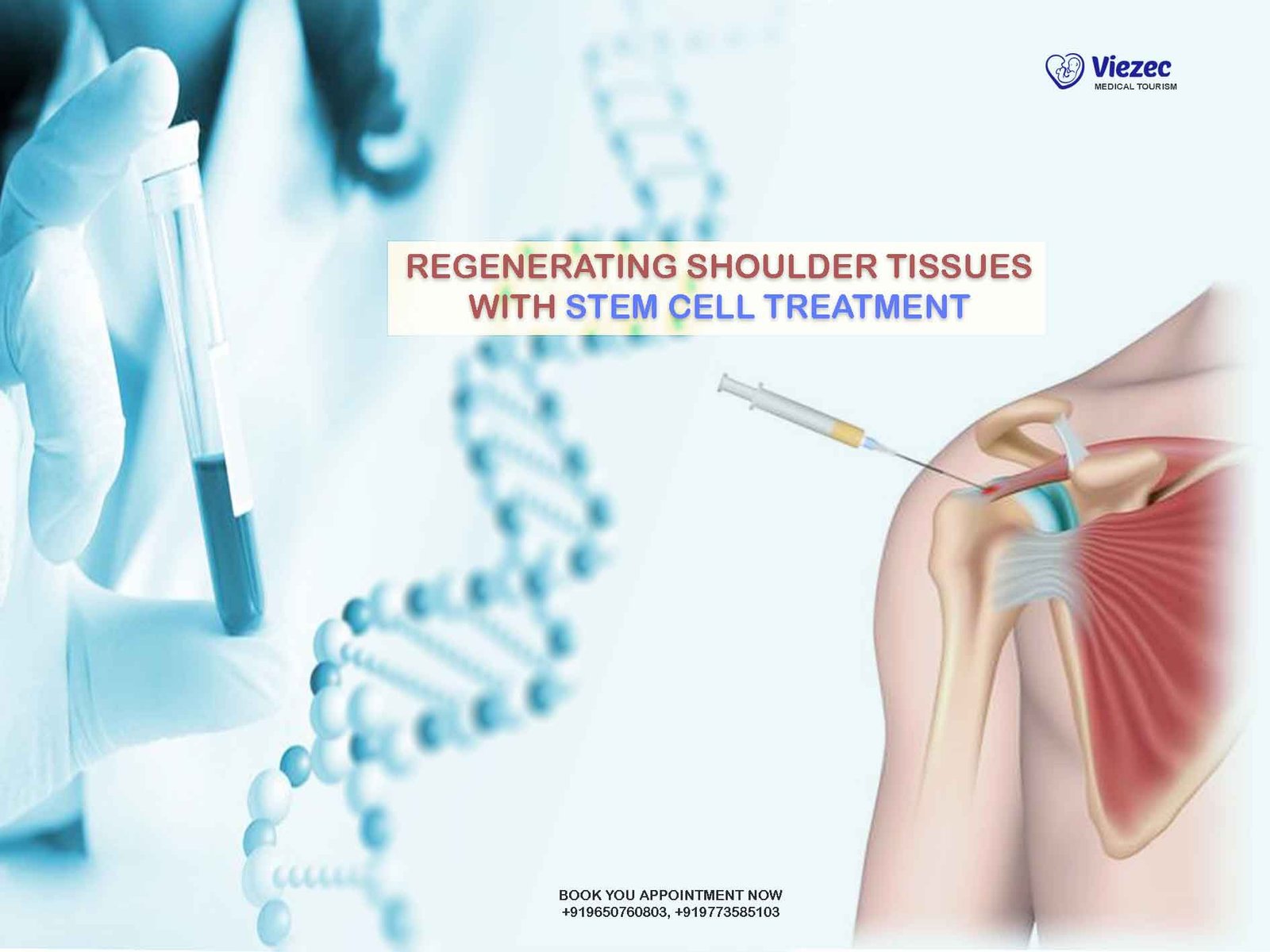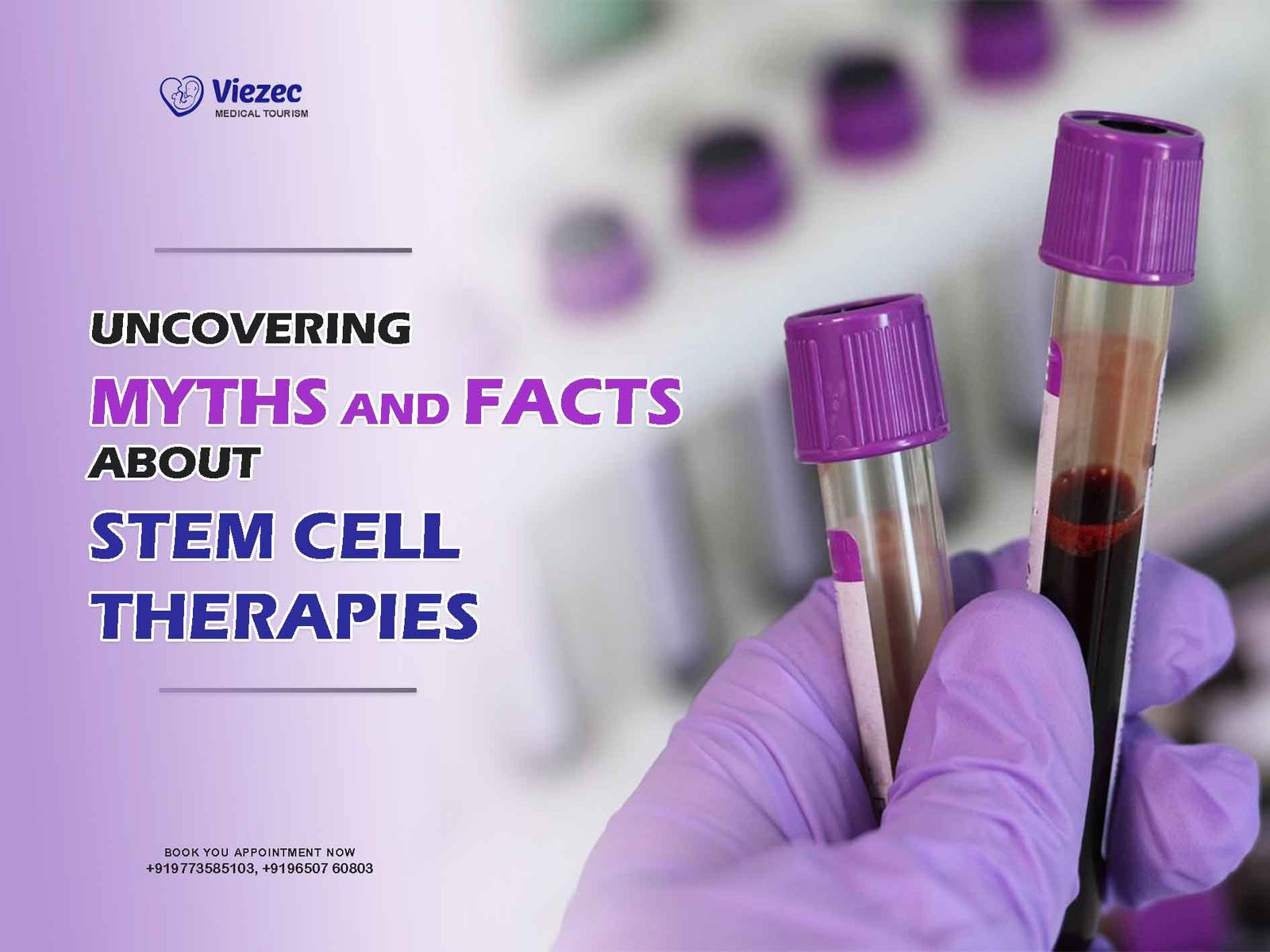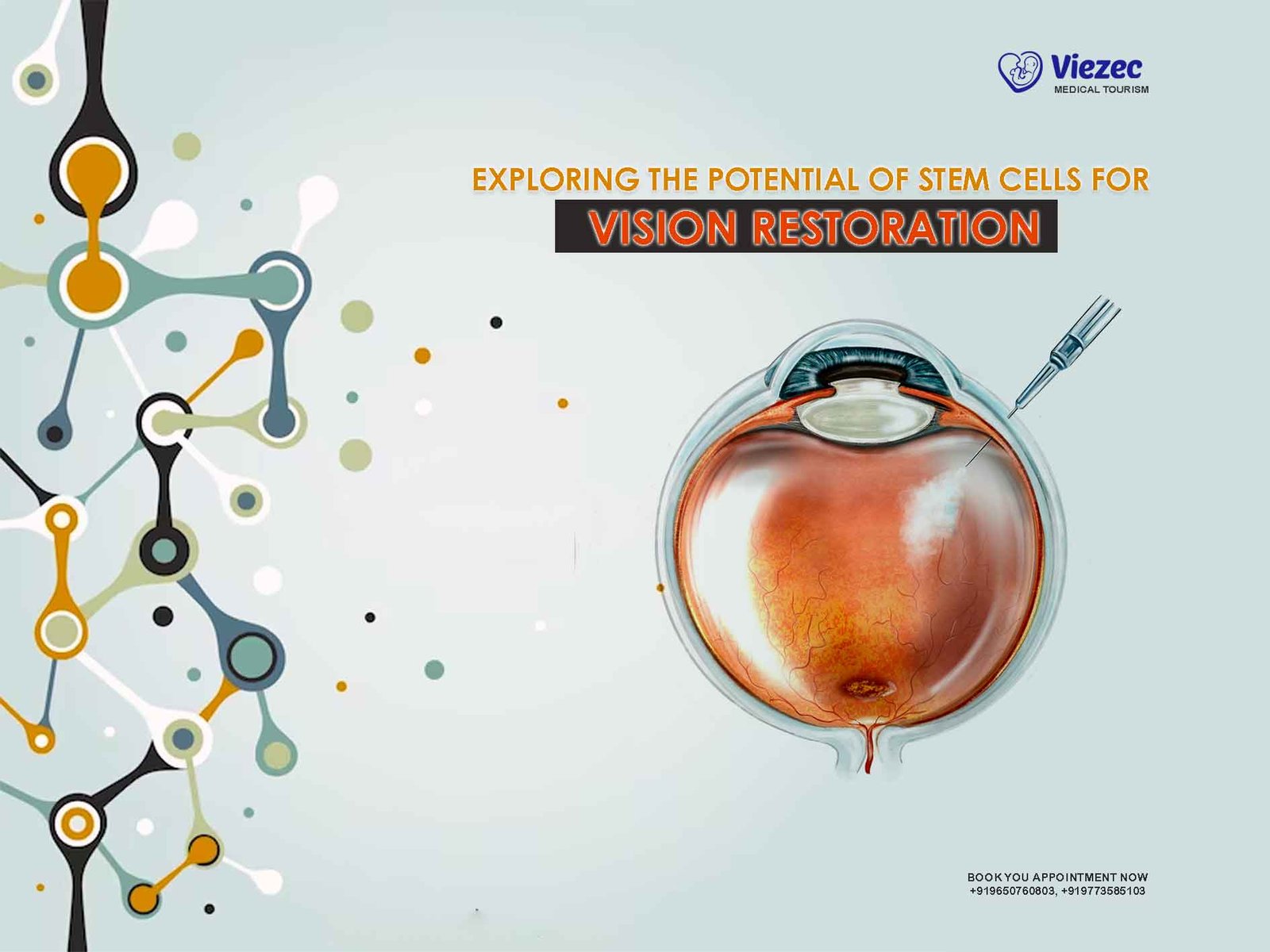Traumatic Brain Injury (TBI) is a significant health issue that affects millions of people worldwide each year. It occurs when an external mechanical force causes brain dysfunction, often resulting from a violent blow or jolt to the head or body. TBI can range from mild concussions to severe brain damage, leading to long-term cognitive, physical, and emotional impairments. The complexity of TBI and its varied outcomes make it a challenging condition to treat. Traditional treatment approaches focus on managing symptoms and preventing further damage, but they often fall short in promoting substantial recovery. This has led to an increased interest in innovative therapies, such as stem cell therapy, which holds the promise of repairing and regenerating damaged brain tissue.
Overview of Stem Cell Therapy
Stem cell therapy is an emerging field of medicine that leverages the unique properties of stem cells to treat various diseases and injuries, including TBI. Stem cells have the ability to differentiate into different cell types and promote repair and regeneration of damaged tissues. There are several types of stem cells used in therapy, including embryonic stem cells, adult stem cells, and induced pluripotent stem cells. Each type has distinct characteristics and potential applications. In the context of TBI, stem cell therapy aims to replace lost or damaged neurons, reduce inflammation, and create a supportive environment for brain repair. The approach involves harvesting stem cells, processing them in the laboratory, and delivering them to the injury site through various methods.
Importance of Cost Analysis in Stem Cell Therapy
While the potential benefits of stem cell therapy for TBI are promising, understanding the costs associated with this treatment is crucial for patients, healthcare providers, and policymakers. Stem cell therapy is a complex and resource-intensive process, involving numerous steps from cell harvesting to post-therapy care. Each of these steps incurs significant expenses, which can vary widely depending on multiple factors. A comprehensive cost analysis helps in making informed decisions, ensuring that the therapy is accessible, sustainable, and equitable. It also provides insights into the economic burden on patients and the healthcare system, guiding strategies to optimize resource allocation and reduce financial barriers to treatment.
The Basics of Stem Cell Therapy
Types of Stem Cells Used in Therapy
Embryonic Stem Cells
Embryonic stem cells (ESCs) are derived from early-stage embryos and possess the highest potential for differentiation into any cell type in the body. This pluripotent nature makes them highly valuable for regenerative medicine, including treatments for TBI. ESCs can potentially replace lost or damaged neurons, promote repair, and restore brain function. However, the use of embryonic stem cells is surrounded by ethical and legal controversies due to the destruction of embryos involved in their extraction. Additionally, there are concerns about the risk of tumor formation and immune rejection. Despite these challenges, ongoing research aims to refine techniques for safer and more effective use of ESCs in clinical settings.
Adult Stem Cells
Adult stem cells, also known as somatic stem cells, are found in various tissues of the body, including the brain, bone marrow, and fat. Unlike embryonic stem cells, they are multipotent, meaning they can differentiate into a limited range of cell types related to their tissue of origin. Mesenchymal stem cells (MSCs) from bone marrow or adipose tissue are commonly used in TBI therapy due to their ability to modulate inflammation, promote tissue repair, and support neuronal growth. Adult stem cells are considered less controversial than ESCs and have a lower risk of tumorigenesis. However, their limited differentiation potential and lower proliferation rate may affect their efficacy in treating severe brain injuries.
Induced Pluripotent Stem Cells
Induced pluripotent stem cells (iPSCs) are adult cells that have been genetically reprogrammed to an embryonic-like pluripotent state. This breakthrough technology allows the generation of patient-specific stem cells without the ethical concerns associated with ESCs. iPSCs can differentiate into any cell type, making them a versatile option for regenerative therapies, including TBI. The use of iPSCs offers the potential for personalized treatments, reducing the risk of immune rejection. However, the process of creating and maintaining iPSCs is complex and expensive, and there are still concerns about genetic stability and the risk of tumor formation. Research is ongoing to address these issues and enhance the clinical applications of iPSCs.
Mechanism of Stem Cell Therapy in TBI
Stem cell therapy for TBI involves several mechanisms that contribute to brain repair and recovery. Firstly, stem cells can differentiate into neurons and glial cells, replacing lost or damaged brain cells. This cellular replacement is crucial for restoring neural networks and brain function. Secondly, stem cells secrete a variety of growth factors and cytokines that promote neuroprotection, reduce inflammation, and create a favorable environment for brain repair. These paracrine effects help to minimize secondary damage and support the survival and integration of newly formed neurons. Thirdly, stem cells can enhance the endogenous repair mechanisms of the brain by stimulating the proliferation and differentiation of resident neural stem cells. This endogenous activation further contributes to tissue regeneration and functional recovery. Understanding these mechanisms is essential for optimizing stem cell therapy protocols and improving treatment outcomes for TBI patients.
Factors Influencing the Cost of Stem Cell Therapy
Type of Stem Cells
The type of stem cells used in therapy significantly influences the cost of treatment. Embryonic stem cells, with their high pluripotency, require stringent ethical and regulatory compliance, making their procurement and application expensive. Induced pluripotent stem cells, while avoiding some ethical issues, involve sophisticated reprogramming techniques and rigorous quality control, adding to the overall cost. Adult stem cells, although more accessible, vary in cost depending on their source and the complexity of extraction. For instance, harvesting mesenchymal stem cells from bone marrow or adipose tissue involves invasive procedures and advanced laboratory processing, which contribute to higher expenses. The choice of stem cells is dictated by the specific clinical requirements, potential benefits, and the cost implications associated with each type.
Source and Harvesting Methods
The source of stem cells and the methods used for harvesting them are critical factors affecting the cost of stem cell therapy. Embryonic stem cells are typically derived from donated embryos, necessitating complex ethical and legal oversight. Induced pluripotent stem cells are generated from adult cells, which require extensive genetic reprogramming and validation processes. Adult stem cells can be harvested from various tissues like bone marrow, adipose tissue, and peripheral blood, each with its own procedural complexities and costs. For example, bone marrow extraction involves surgical procedures and specialized equipment, while adipose tissue extraction may require less invasive techniques but still demands precise handling and processing. The cost associated with harvesting also includes donor screening, consent procedures, and the potential need for multiple collection attempts to obtain a sufficient quantity of viable stem cells.
Laboratory Processing and Cultivation
The laboratory processing and cultivation of stem cells are significant contributors to the overall cost of therapy. Once harvested, stem cells must be isolated, purified, and expanded under sterile conditions to produce the required number of cells for treatment. This process involves advanced biotechnological techniques, sophisticated equipment, and highly skilled personnel. Quality control measures are essential to ensure the safety and efficacy of the cells, including tests for contamination, genetic stability, and differentiation potential. Additionally, maintaining a sterile environment and adhering to regulatory standards add to the operational costs. The complexity of laboratory procedures and the need for high-quality outcomes make this phase one of the most expensive components of stem cell therapy.
Delivery Methods and Techniques
The methods and techniques used to deliver stem cells to the injury site are crucial factors influencing the cost of therapy. Various delivery methods, such as intravenous infusion, intrathecal injection, and direct intracerebral implantation, have different cost implications. Intravenous and intrathecal methods are less invasive but may require multiple sessions to achieve therapeutic efficacy. Direct intracerebral implantation involves surgical procedures, specialized equipment, and a high level of expertise, significantly increasing the cost. Additionally, the choice of delivery method depends on the severity and location of the brain injury, further influencing the complexity and expense of the procedure. The development of advanced delivery techniques aims to improve the precision and effectiveness of stem cell therapy while managing costs.
Clinical Setting and Infrastructure
The clinical setting and infrastructure required for stem cell therapy play a pivotal role in determining the overall cost. Advanced medical facilities with specialized equipment and trained personnel are essential for conducting stem cell treatments safely and effectively. This includes operating rooms, imaging technologies, and laboratories equipped for cell processing and quality control. The availability of such infrastructure varies widely, influencing the cost of therapy based on location and institutional capabilities. Additionally, the need for interdisciplinary collaboration among neurologists, neurosurgeons, and stem cell biologists adds to the complexity and expense. Ensuring that the clinical setting meets the necessary standards for safety and efficacy is a critical aspect of cost considerations in stem cell therapy.
Geographic Location and Economic Factors
Geographic location and economic factors significantly impact the cost of stem cell therapy for TBI. The availability of advanced medical facilities, regulatory frameworks, and healthcare infrastructure varies widely between countries and regions, influencing the overall expense. In high-income countries with well-established healthcare systems, the costs may be higher due to stringent regulatory requirements, higher operational expenses, and greater demand for cutting-edge treatments. Conversely, in low- and middle-income countries, the cost may be lower, but access to high-quality stem cell therapy might be limited by less developed infrastructure and regulatory oversight. Additionally, economic factors such as local labor costs, availability of resources, and market dynamics play a crucial role in determining the affordability and accessibility of stem cell therapy in different geographic locations.
Pre-Therapy Costs
Diagnostic Evaluations
Imaging Tests (MRI, CT Scans)
Diagnostic evaluations are a critical component of the pre-therapy phase in stem cell treatment for TBI, with imaging tests like MRI and CT scans being essential tools. These imaging modalities provide detailed visualizations of brain anatomy, enabling clinicians to assess the extent and location of the injury. Magnetic Resonance Imaging (MRI) offers high-resolution images and is particularly useful for detecting subtle brain injuries, monitoring changes over time, and planning targeted stem cell delivery. However, MRI scans are costly, involving advanced technology, specialized radiologists, and substantial operational expenses. Computed Tomography (CT) scans, while more accessible and quicker, expose patients to ionizing radiation and may not provide as detailed images as MRI. The choice between MRI and CT depends on clinical indications, patient condition, and cost considerations, making imaging tests a significant pre-therapy expense.
Neuropsychological Assessments
Neuropsychological assessments are essential for evaluating cognitive, behavioral, and emotional functions in TBI patients before undergoing stem cell therapy. These assessments involve a series of standardized tests administered by clinical neuropsychologists to measure various cognitive domains such as memory, attention, language, and executive functions. The results provide a comprehensive baseline of the patient’s cognitive status, helping to tailor the therapy to individual needs and monitor progress over time. Neuropsychological assessments are time-intensive and require specialized expertise, contributing to the overall cost of pre-therapy evaluations. Additionally, these assessments help identify specific cognitive deficits and guide rehabilitation strategies, enhancing the effectiveness of stem cell therapy in improving functional outcomes for TBI patients.
Consultations and Specialist Fees
Consultations with medical specialists are a necessary step in the pre-therapy process for stem cell treatment of TBI. Patients typically require evaluations by neurologists, neurosurgeons, and stem cell therapy experts to determine their suitability for the treatment. These consultations involve detailed medical history reviews, physical examinations, and discussions about potential risks, benefits, and alternatives. The expertise and time of highly specialized physicians contribute to the consultation fees, which can be substantial. Furthermore, multidisciplinary team meetings are often needed to develop a comprehensive treatment plan, adding to the overall cost. Ensuring that patients receive thorough and informed evaluations is crucial for optimizing treatment outcomes and minimizing risks associated with stem cell therapy.
Pre-treatment Medications and Preparations
Before undergoing stem cell therapy, patients may need to take specific medications and undergo various preparatory procedures to ensure optimal conditions for treatment. Pre-treatment medications can include immunosuppressive drugs to prevent rejection of stem cells, anti-inflammatory agents to reduce inflammation, and medications to stabilize the patient’s condition. These medications, along with the necessary medical supervision, add to the pre-therapy costs. Additionally, preparatory procedures such as blood tests, allergy screenings, and prophylactic measures are essential to minimize potential complications. The cost of these preparations varies depending on the patient’s medical history, the specific requirements of the stem cell therapy protocol, and the need for personalized medical management.
Therapy Costs
Stem Cell Procurement and Processing
The procurement and processing of stem cells are among the most significant expenses in stem cell therapy for TBI. This phase involves several steps, including harvesting stem cells from the patient or a donor, isolating and purifying the cells, and expanding them in the laboratory to obtain the required quantity. Each step requires advanced technology, specialized equipment, and highly trained personnel, contributing to the overall cost. Quality control measures are critical to ensure the safety and efficacy of the stem cells, involving rigorous testing for contamination, genetic stability, and differentiation potential. Additionally, the complexity of maintaining sterile conditions and adhering to regulatory standards further increases the cost. The financial investment in procuring and processing stem cells is substantial but necessary to achieve the desired therapeutic outcomes.
Surgical or Non-Surgical Delivery
The delivery of stem cells to the brain injury site can be achieved through surgical or non-surgical methods, each with its own cost implications. Surgical delivery, such as direct intracerebral implantation, involves complex neurosurgical procedures that require specialized equipment, operating rooms, and highly skilled neurosurgeons. This method allows precise placement of stem cells at the injury site but significantly increases the overall cost due to the invasiveness and associated medical expenses. Non-surgical delivery methods, such as intravenous infusion or intrathecal injection, are less invasive and generally more cost-effective. However, these methods may require multiple sessions to achieve the desired therapeutic effect, adding to the cumulative cost. The choice of delivery method depends on factors such as the severity of the injury, patient condition, and clinical recommendations, with cost considerations playing a crucial role in the decision-making process.
Hospitalization and Clinical Care
Hospitalization and clinical care are essential components of stem cell therapy for TBI, contributing significantly to the overall cost. The duration of hospital stay varies depending on the complexity of the treatment, patient condition, and potential complications. During hospitalization, patients require continuous monitoring, nursing care, and access to specialized medical facilities. Advanced imaging technologies, laboratory tests, and supportive therapies are often necessary to ensure the safety and efficacy of the treatment. The costs associated with hospitalization include room charges, medical supplies, and professional fees for doctors, nurses, and other healthcare providers. Additionally, the need for a sterile environment and adherence to strict clinical protocols further increase the expenses. Ensuring high-quality clinical care is crucial for optimizing treatment outcomes and minimizing risks, making hospitalization a significant cost factor in stem cell therapy.
Monitoring and Immediate Post-Therapy Care
Immediate post-therapy care and monitoring are critical for assessing the initial response to stem cell therapy and managing potential complications. This phase involves close observation of the patient’s vital signs, neurological status, and overall health. Regular imaging tests, laboratory analyses, and clinical evaluations are conducted to monitor the integration and effectiveness of the stem cells. The need for intensive care, specialized medical equipment, and round-the-clock medical supervision adds to the cost. Additionally, any adverse reactions or complications that arise during this period require prompt medical intervention, further increasing the expenses. Immediate post-therapy care is essential for ensuring patient safety, optimizing therapeutic outcomes, and providing a foundation for long-term recovery.
Post-Therapy Costs
Follow-Up Consultations
Follow-up consultations are an essential part of the post-therapy phase in stem cell treatment for TBI, playing a critical role in monitoring patient progress and addressing any emerging issues. These consultations typically involve regular visits to neurologists, neurosurgeons, and stem cell therapy specialists who assess the patient’s recovery, conduct necessary tests, and adjust treatment plans as needed. The frequency and duration of follow-up consultations vary depending on the individual patient’s condition and response to therapy. Each visit incurs costs associated with specialist fees, diagnostic tests, and any additional treatments or medications required. The cumulative expense of follow-up consultations can be significant, but they are crucial for ensuring the long-term success and safety of stem cell therapy, making them an indispensable component of the overall treatment cost.
Rehabilitation and Therapy Sessions
Rehabilitation and therapy sessions are vital for maximizing the benefits of stem cell therapy in TBI patients. These sessions include physical therapy, occupational therapy, speech therapy, and cognitive rehabilitation, tailored to address specific deficits and enhance functional recovery. The cost of rehabilitation varies depending on the intensity, frequency, and duration of the sessions required. Skilled therapists, specialized equipment, and individualized treatment plans contribute to the expenses. Comprehensive rehabilitation programs are essential for promoting neuroplasticity, improving motor and cognitive functions, and enhancing the overall quality of life for TBI patients. Investing in high-quality rehabilitation services is crucial for optimizing the long-term outcomes of stem cell therapy, although it significantly adds to the post-therapy costs.
Medications and Supplements
Medications and supplements are often necessary in the post-therapy phase to support the recovery process and address any residual symptoms or complications. These may include neuroprotective agents, anti-inflammatory drugs, pain management medications, and supplements to promote brain health and function. The cost of these medications varies based on the type, dosage, and duration of the treatment required. Additionally, regular medical supervision and follow-up appointments are necessary to monitor the patient’s response to the medications and adjust prescriptions as needed. The expense of ongoing pharmacological support can be substantial, but it plays a crucial role in ensuring optimal recovery and maintaining the therapeutic benefits achieved through stem cell therapy.
Long-Term Monitoring and Evaluations
Long-term monitoring and evaluations are essential for assessing the sustained impact of stem cell therapy on TBI patients and ensuring ongoing management of their condition. This phase involves periodic check-ups, imaging tests, neuropsychological assessments, and other diagnostic evaluations to track the progress of brain repair and function. The cost of long-term monitoring includes specialist fees, advanced diagnostic technologies, and any additional treatments or interventions required based on the evaluations. Maintaining regular monitoring is crucial for detecting potential late-onset complications, adjusting rehabilitation strategies, and providing timely medical interventions to address emerging issues. The financial commitment to long-term monitoring is significant but necessary for optimizing the enduring success of stem cell therapy and enhancing the quality of life for TBI patients.
Hidden and Indirect Costs
Travel and Accommodation for Treatment
Travel and accommodation expenses are significant hidden costs associated with stem cell therapy for TBI, especially for patients who need to travel long distances to access specialized treatment centers. These costs include transportation, lodging, meals, and other incidental expenses incurred during the treatment period. For patients and their families, the financial burden of travel and accommodation can be substantial, adding to the overall cost of therapy. Additionally, the need for extended stays near the treatment center for pre-therapy evaluations, the therapy itself, and post-therapy follow-ups further increases these expenses. Financial support and planning for travel and accommodation are essential considerations for ensuring that patients can access the necessary care without undue financial strain.
Loss of Income and Employment
The impact of TBI and the subsequent treatment process can result in significant loss of income and employment for patients and their caregivers. Patients may be unable to work during the recovery period, leading to a loss of wages and financial stability. Additionally, caregivers often need to take time off work or reduce their working hours to provide support and assistance, further contributing to the financial burden. The loss of income can be particularly challenging for families already dealing with the high costs of medical treatment and rehabilitation. Understanding and addressing these indirect costs are crucial for providing comprehensive support to TBI patients and their families, ensuring that financial hardships do not impede access to necessary care and recovery.
Psychological and Emotional Support
Psychological and emotional support is a critical but often overlooked aspect of the cost associated with stem cell therapy for TBI. Patients and their families frequently experience significant stress, anxiety, and emotional challenges throughout the treatment and recovery process. Access to mental health services, including counseling, therapy, and support groups, is essential for addressing these issues and promoting overall well-being. The cost of psychological and emotional support can add to the financial burden, but it is a vital component of comprehensive care. Providing adequate support helps patients and families cope with the emotional impact of TBI, enhances treatment adherence, and contributes to better long-term outcomes.
Caregiver Expenses
Caregiver expenses are another hidden cost associated with stem cell therapy for TBI. Family members or hired caregivers often need to provide continuous support and assistance to patients during their recovery. These expenses include the cost of hiring professional caregivers, purchasing medical supplies, and making necessary modifications to the home environment to accommodate the patient’s needs. The financial impact on caregivers can be substantial, especially if they need to reduce their work hours or leave their jobs to provide full-time care. Recognizing and addressing caregiver expenses are essential for ensuring that patients receive the necessary support without imposing undue financial strain on their families. Providing resources and assistance to caregivers can significantly enhance the overall quality of care and improve the patient’s recovery outcomes.
FAQs
What is the average cost of stem cell therapy for TBI?
The average cost of stem cell therapy for TBI can vary widely depending on factors such as the type of stem cells used, the complexity of the treatment, and the geographic location. On average, the cost can range from $20,000 to $100,000 or more. It is important to consider all associated costs, including pre-therapy evaluations, the therapy itself, and post-therapy care.
Are there any insurance plans that cover stem cell therapy for TBI?
Coverage for stem cell therapy for TBI varies by insurance provider and policy. Some insurance plans may cover certain aspects of the treatment, such as diagnostic evaluations and hospital stays, but may not cover the stem cell therapy itself. It is essential to consult with your insurance provider to understand the specific coverage and potential out-of-pocket expenses.
What are the potential risks and side effects of stem cell therapy for TBI?
While stem cell therapy holds promise for treating TBI, it is not without risks and potential side effects. These can include immune rejection, infection, bleeding, and the possibility of tumor formation. It is crucial to discuss these risks with your healthcare provider and ensure that the treatment is conducted in a controlled and regulated environment.
How long does it take to see results from stem cell therapy for TBI?
The time it takes to see results from stem cell therapy for TBI can vary depending on the severity of the injury, the type of stem cells used, and the individual patient’s response to treatment. Some patients may start to see improvements within weeks or months, while others may take longer. Regular follow-up evaluations are essential to monitor progress and adjust treatment as needed.
For more information and to explore treatment options, visit us online.









